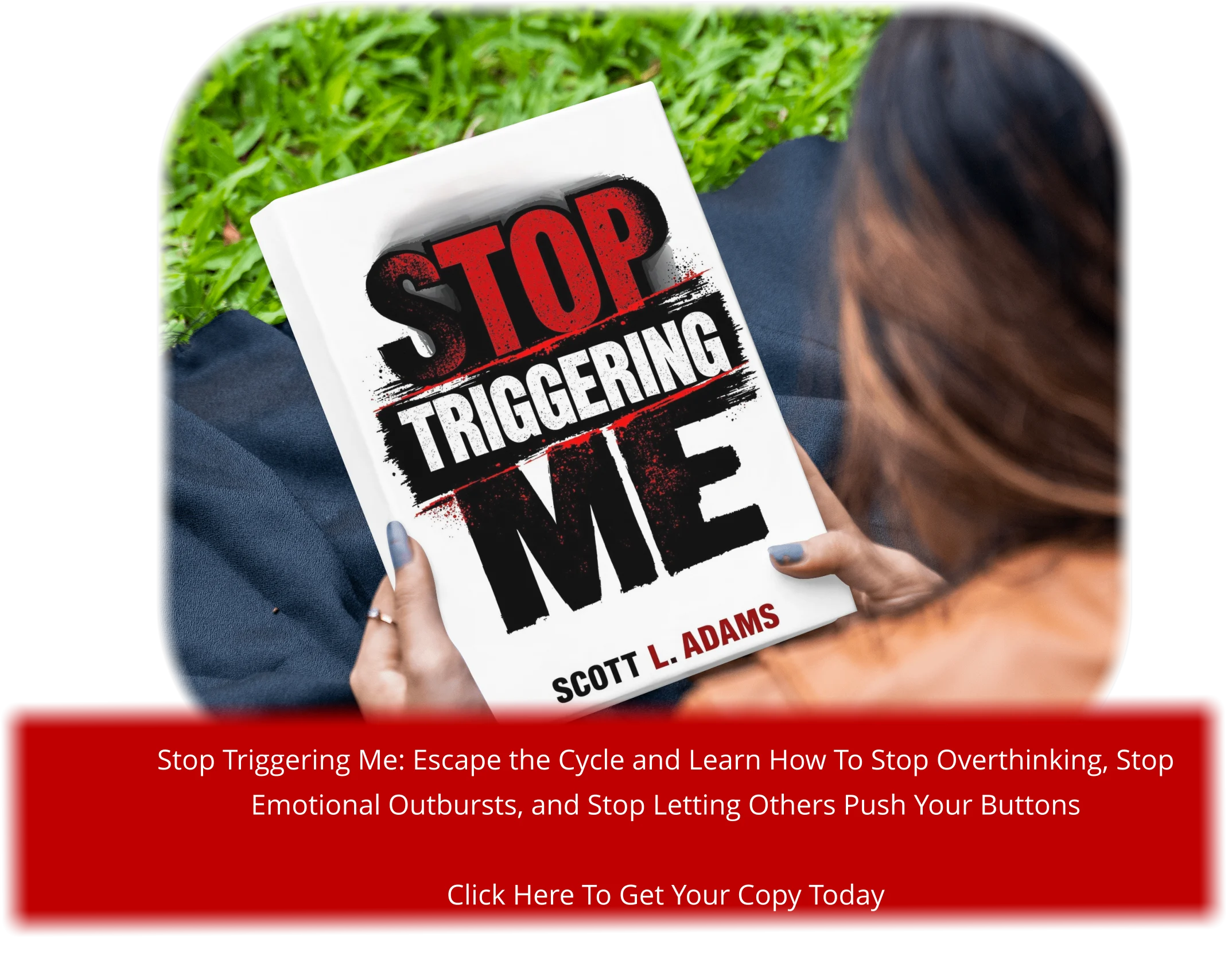Uncontrolled anger can be devastating, affecting not just personal relationships but also careers and overall mental health. I’ve seen firsthand the destructive power of unmanaged anger issues in the lives of men I’ve worked with.
Many believe that experiencing anger means there’s something fundamentally wrong with them, but I’ve learned that it’s not the anger itself that’s the problem—it’s how we respond to and express it that matters.
Through my journey and experience, I’ve discovered that men often default to anger when they’re actually feeling hurt, fear, or frustration. In this guide, I’ll share practical techniques to help develop healthier relationships with anger, drawing from both clinical approaches and real-life experiences.
Key Takeaways
- Understanding that anger isn’t the problem, but how we express it is.
- Recognizing that anger issues can stem from underlying emotions like hurt or fear.
- Practical techniques can be learned to manage anger effectively.
- Developing a healthier relationship with anger is possible through therapy and self-reflection.
- Effective anger management improves overall mental health.
Understanding Anger in Men
In my experience as a therapist, I’ve seen that men’s anger stems from various sources. As a male therapist, I get numerous referrals from men who are told they need “anger management.” Most often, the person who sends them is their wife.
What Causes Anger in Men?
Men’s anger often stems from two primary sources: societal expectations that limit emotional expression and legitimate grievances that aren’t being addressed or validated. Many men have been conditioned to suppress emotions like sadness, fear, and vulnerability, leaving anger as their only acceptable emotional outlet. This creates a pressure cooker effect where various feelings get funneled into anger.
- Societal expectations limit emotional expression
- Legitimate grievances aren’t being addressed or validated
- Physiological factors like testosterone and stress hormones play a role
The Difference Between Healthy and Unhealthy Anger
Understanding the difference between healthy and unhealthy anger is crucial. Healthy anger motivates positive change and boundary-setting, while unhealthy anger is disproportionate, destructive, and often masks deeper issues. When men experience what psychologists call “alexithymia”—difficulty identifying and naming emotions—they may be feeling hurt or scared but can only express these feelings as anger.
Healthy anger is proportionate to the situation, expressed appropriately, and resolves once the issue is addressed. Unhealthy anger persists, escalates beyond the triggering event, and often leads to regrettable words or actions.
Recognizing Your Anger Warning Signs
To control anger, it’s essential to be aware of the personal warning signs that signal its onset. Through my own experiences and helping others manage their anger, I’ve learned that recognizing these signs is a crucial step in the anger management process.
Physical Signs of Rising Anger
Our bodies often signal rising anger before our conscious minds recognize it. Some common physical warning signs include:
- Muscle tightening, especially around the jaw, shoulders, and arms
- A sensation of building pressure in the head
- Sensations of heat and flushing in the face
- Increased heart rate or blood pressure
- Rapid breathing
- Sweating or shaking
Emotional and Mental Warning Signs
Beyond the physical signs, certain emotional and mental patterns can indicate that anger is escalating. These include:
- Losing patience or feeling irritated
- Feeling humiliated, resentful, or frustrated
- Feeling overwhelmed or having difficulty controlling emotions
- Difficulty concentrating or making decisions
Being aware of these signs can help you intervene before your anger escalates. By understanding your personal warning signs, you can take the first step towards controlling your anger and managing your emotions more effectively.
Immediate Techniques for Anger Management for Men
Managing anger isn’t about suppressing emotions but about learning to respond rather than react. When we react impulsively, we often regret our actions later. Fortunately, there are several immediate techniques that can help men manage anger more effectively.
The Count to 10 Method
One simple yet effective technique is the count to 10 method. When you start to feel angry, pause and think about what’s happening so you don’t act on impulse. Take a moment to count to 10. This brief pause interrupts the automatic anger response and gives your rational mind time to catch up with your emotions. By doing so, you’ll have a chance to calm down and think about how you want to respond.
Strategic Time-Outs
Another valuable technique is taking a strategic time-out. Stepping away from a situation when you start to feel angry gives you space to think clearly. If things start to get heated, try saying something like, “I think I need to take a break for a bit. I’ll come back, and we can sort this out in half an hour.” This approach helps prevent escalation and allows you to process your feelings.
Controlled Breathing Exercises
Controlled breathing is also highly effective in reducing anger. Slowing and deepening your breath can help calm you down. Try taking five long, slow breaths, inhaling slowly through your nose for a count of four, holding for a count of two, and exhaling through your mouth for a count of six. Focus on relaxing the muscles in your arms and face as you breathe.
Positive Self-Talk Strategies
The way we talk to ourselves matters. Instead of escalating the situation with negative self-talk, try using calming statements. Say to yourself, “Cool it. I can handle this,” or “No point flying off the handle. Let’s just take a few breaths.” Replacing negative thoughts with positive affirmations can dramatically change how you respond to anger-provoking situations.
These immediate techniques aren’t about avoiding your feelings but about creating space between the trigger and your response. This space allows you to choose a reaction that aligns with your values rather than one you’ll regret later. By incorporating these strategies into your daily life, you can better manage anger and improve your overall well-being.
- Practice the count to 10 method to pause and reflect before reacting.
- Use strategic time-outs to step away and calm down.
- Employ controlled breathing exercises to reduce tension.
- Utilize positive self-talk to influence your response to anger.
Reframing Your Perspective
One of the most effective strategies for managing anger involves altering your perspective on a situation. When we feel angry, our initial reaction is often to lash out or react impulsively. However, by taking a step back and reframing the situation, we can manage our anger more effectively.
Seeing the Situation Differently
Reframing involves consciously choosing to view a situation from a different perspective. By shifting your perspective, you may be able to see the situation in a more positive light, identify new solutions, or better understand the other person’s point of view. For instance, when I feel anger building toward someone, I practice “perspective-taking” – I deliberately try to imagine legitimate reasons for their behavior that don’t involve intentionally trying to upset me. This technique has been particularly helpful in managing my anger.
Effective Distraction Techniques
Distracting yourself can also be an effective way to manage anger. If you’re alone and feeling angry, try doing something to stop your anger from escalating. For example, you can play music, call a friend, listen to a podcast, go for a walk, or clean the house. Shifting your focus to something else can help reduce your feelings of anger. I’ve found that physical activities like a brisk walk or household chores work particularly well in breaking the escalating cycle of anger.
By incorporating these techniques into your daily life, you can develop better anger management skills and improve your overall well-being. Practicing reframing during calm moments by reviewing past anger episodes and identifying alternative interpretations can build the mental muscle memory needed to reframe in the heat of the moment.
Long-Term Strategies for Managing Anger
Long-term anger management for men involves a combination of self-awareness, stress reduction, and healthy coping mechanisms. By adopting these strategies, men can better manage their anger and improve their overall well-being.
Regular Physical Exercise
Regular physical exercise is one of the most effective long-term strategies for managing anger. It not only releases tension and stress hormones but also improves overall mood and resilience to triggers. Engaging in physical activities like running, cycling, or playing sports can help regulate stress levels and burn off excess energy.
Stress Reduction Practices
Establishing a consistent stress reduction practice is crucial for sustainable anger management. Techniques such as meditation, deep breathing exercises, or progressive muscle relaxation can help reduce stress and anxiety. I recommend engaging in these practices daily to manage anger effectively.
Identifying Personal Anger Triggers
Identifying personal anger triggers is a vital step in managing anger. Keeping an “anger journal” to document situations, thoughts, and physical sensations that precede anger outbursts can reveal patterns. By understanding these triggers, men can take steps to manage them more effectively.
Finding Creative Outlets
Engaging in creative activities can provide a healthy outlet for emotions and reduce feelings of anger. Activities like woodworking, music, writing, or art can be transformative. These creative outlets not only provide an emotional release but also foster a sense of accomplishment, counteracting frustration.
By incorporating these long-term strategies into daily life, men can develop healthier ways to manage anger and improve their overall quality of life.
Addressing the Emotions Behind Anger
For many men, anger is a default emotion that masks other feelings. It’s not that they’re excessively angry; it’s just that anger is what they know how to express. This phenomenon is often linked to a condition known as alexithymia, which is a difficulty in identifying and naming emotions.
The Connection Between Anger and Other Emotions
Anger often serves as a secondary emotion, masking more vulnerable feelings like hurt, fear, or disappointment. Many men struggle to identify these underlying emotions, leading to anger becoming their default reaction. Through my experience working with men on anger issues, I’ve discovered that helping them recognize and name different emotions gives them greater control over their behavior.
When you feel angry, ask yourself, “If I wasn’t feeling angry right now, what might I be feeling instead?” This simple technique, which I call “emotional excavation,” can help uncover hidden emotions. For instance, you might be feeling hurt or fear instead of anger.
Developing Emotional Awareness
Developing emotional awareness is crucial for managing anger effectively. This involves recognizing the physical sensations associated with different emotions and understanding how these emotions impact your behavior. By becoming more aware of your emotional state, you can better navigate situations that might otherwise trigger anger.
For men who find it challenging to identify emotions, starting with physical sensations can be helpful. Noticing where you feel tension or discomfort in your body can provide clues to the emotions you’re experiencing. This increased awareness can lead to more authentic expression of your emotions and deeper connections with others.
Improving Communication in Relationships
Effective communication is the backbone of any healthy relationship, and it’s something that I’ve found to be particularly crucial when it comes to managing anger. When men can communicate their needs and feelings effectively, they’re less likely to let anger escalate into something more harmful. I’ve seen this in my own life and in the lives of the men I’ve worked with.
Active Listening Skills
One of the most critical components of effective communication is active listening. This involves more than just waiting for your turn to speak; it’s about truly understanding what the other person is saying. I practice techniques like paraphrasing what my partner has said, asking clarifying questions, and acknowledging their feelings before responding. By doing so, I’ve found that I can reduce misunderstandings and create a more empathetic and supportive dialogue.
Expressing Needs Without Aggression
Another vital aspect of communication is expressing your needs without being aggressive. I’ve found the XYZ formula to be particularly helpful: “When you do X in situation Y, I feel Z.” This structure allows you to express your feelings without blaming or attacking the other person. By using this formula, you can convey your needs in a clear and respectful manner, reducing the likelihood of anger escalation.
Navigating Conflict Constructively
Conflicts are inevitable in any relationship, but it’s how you navigate them that matters. I’ve learned that it’s essential to focus on solutions rather than blame. Asking questions like “What can we do differently next time?” can help shift the conversation from past grievances to future improvements. By adopting this approach, you can work together to find a resolution that strengthens your relationship.
Conclusion
As I reflect on my journey with anger management, I’ve come to realize that it’s not about eliminating anger, but about cultivating a healthier relationship with it. Throughout this journey, I’ve learned that effective anger management is crucial for improving mental health and relationships.
The techniques I’ve shared, from immediate strategies like controlled breathing to long-term approaches like identifying emotional triggers, have helped me transform my relationship with anger. By developing emotional awareness and improving communication skills, I’ve been able to manage anger more effectively.
For men struggling with severe anger issues, I strongly recommend seeking professional help. Resources like MensLine Australia, mental health hotlines, and support groups can provide valuable guidance and support. Remember, managing anger is a journey, not a destination. By taking control of your anger, you’re taking a powerful step toward a more fulfilling life and improving your overall health and well-being.
By adopting these strategies and seeking help when needed, men can develop the skills necessary to manage anger and improve their relationships, work performance, and overall quality of life.









